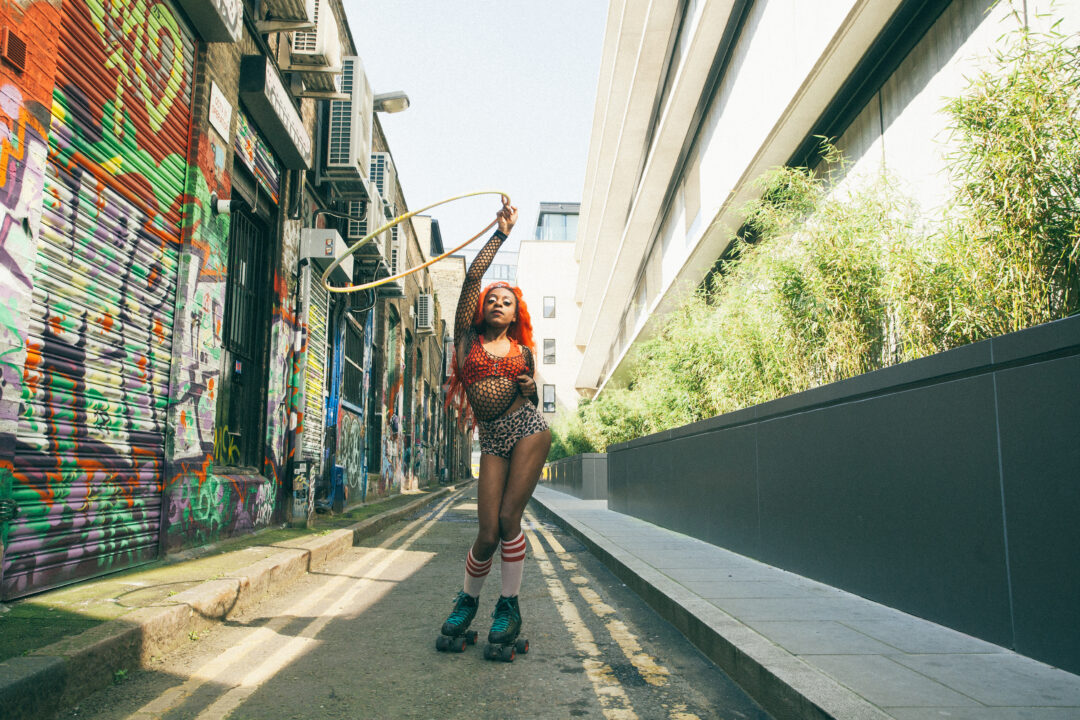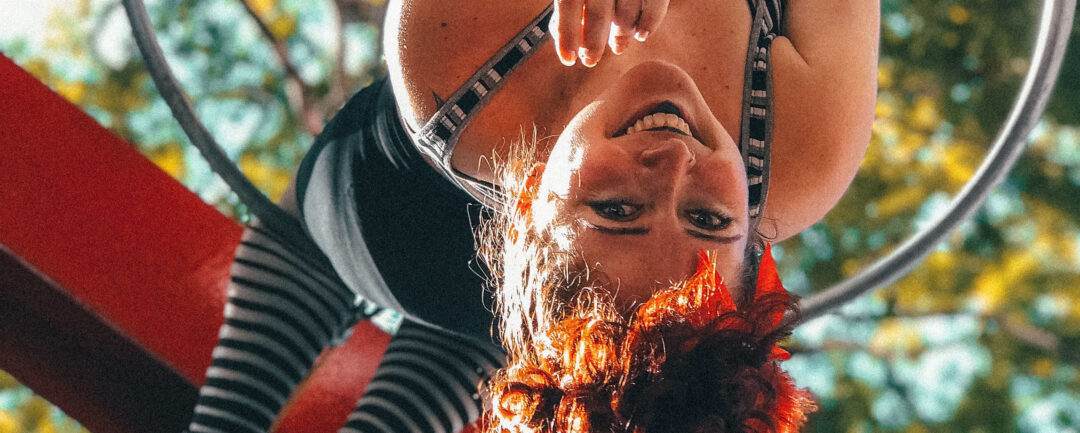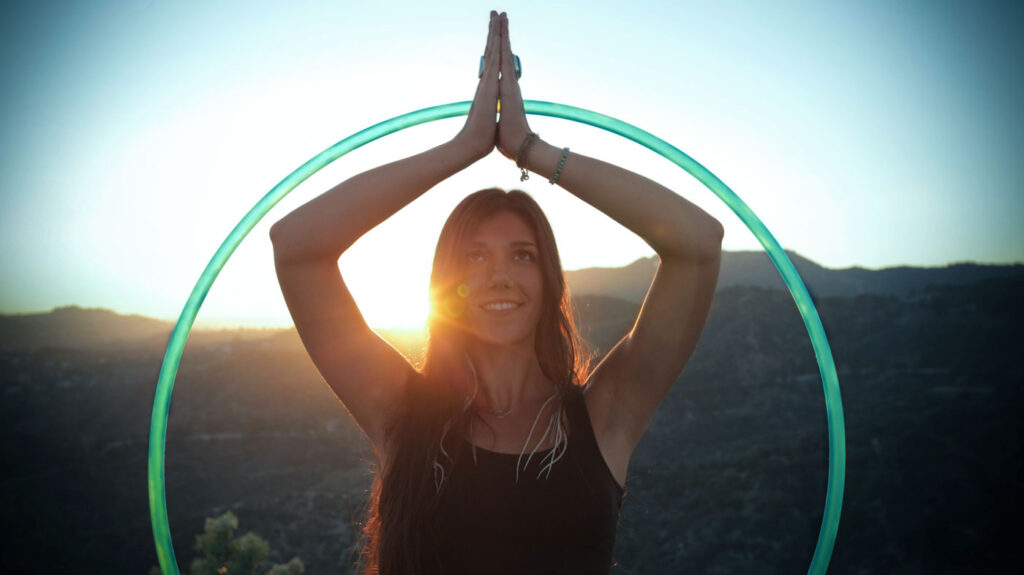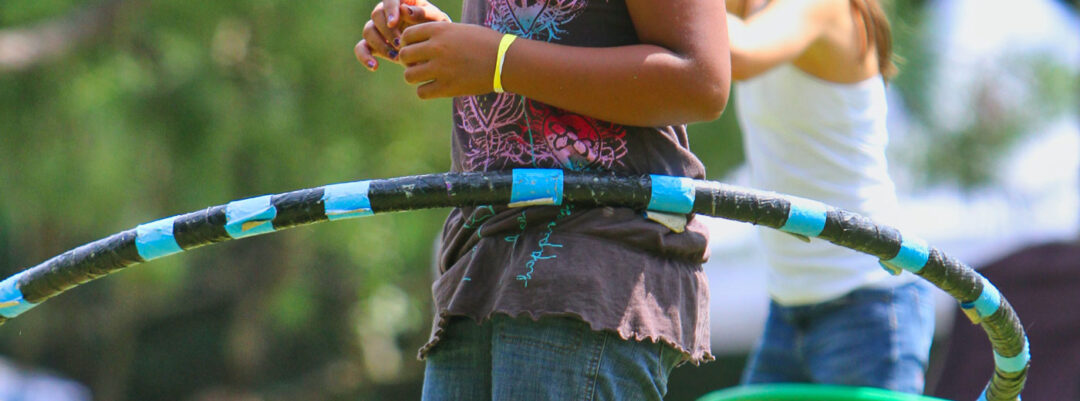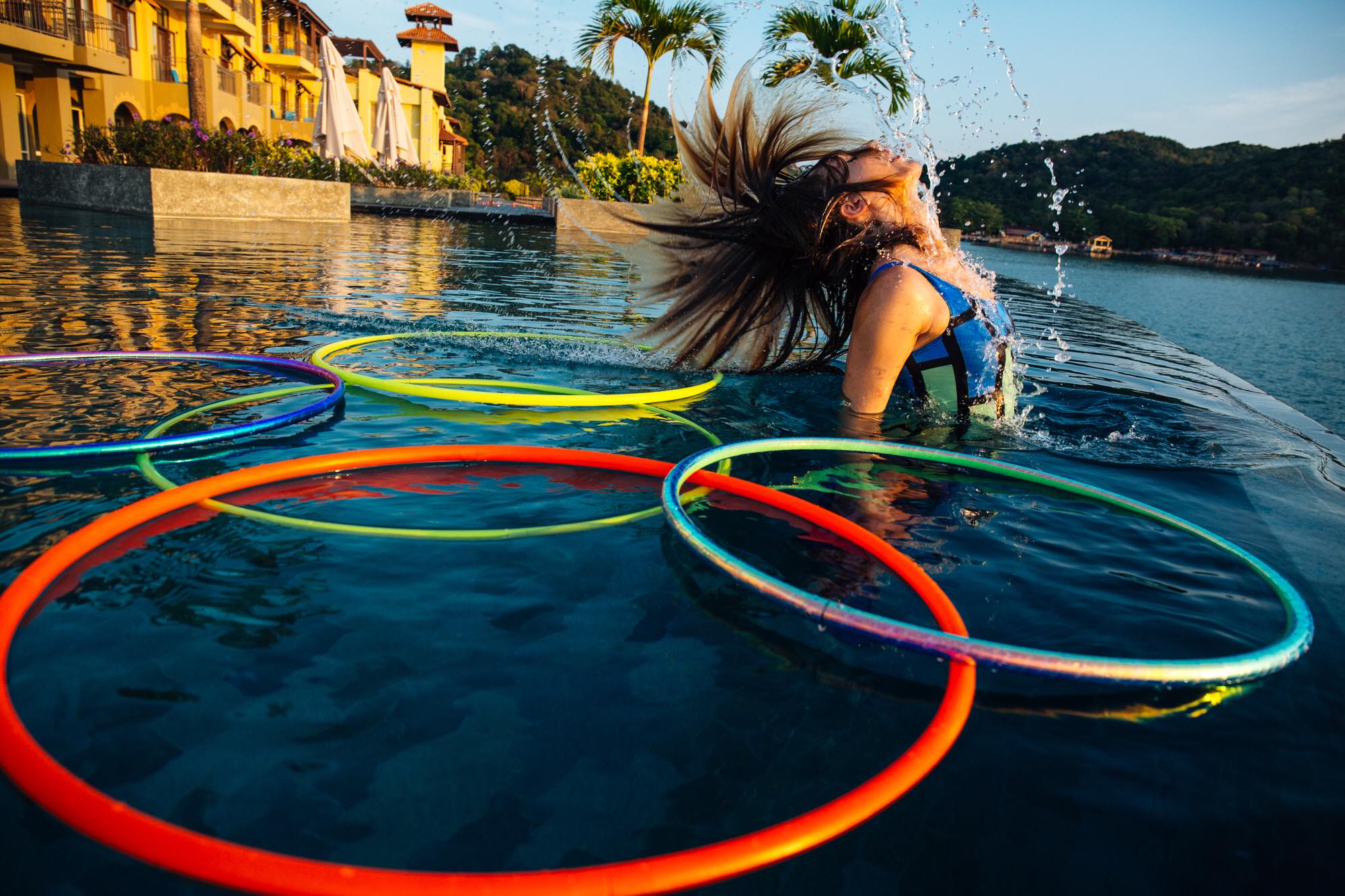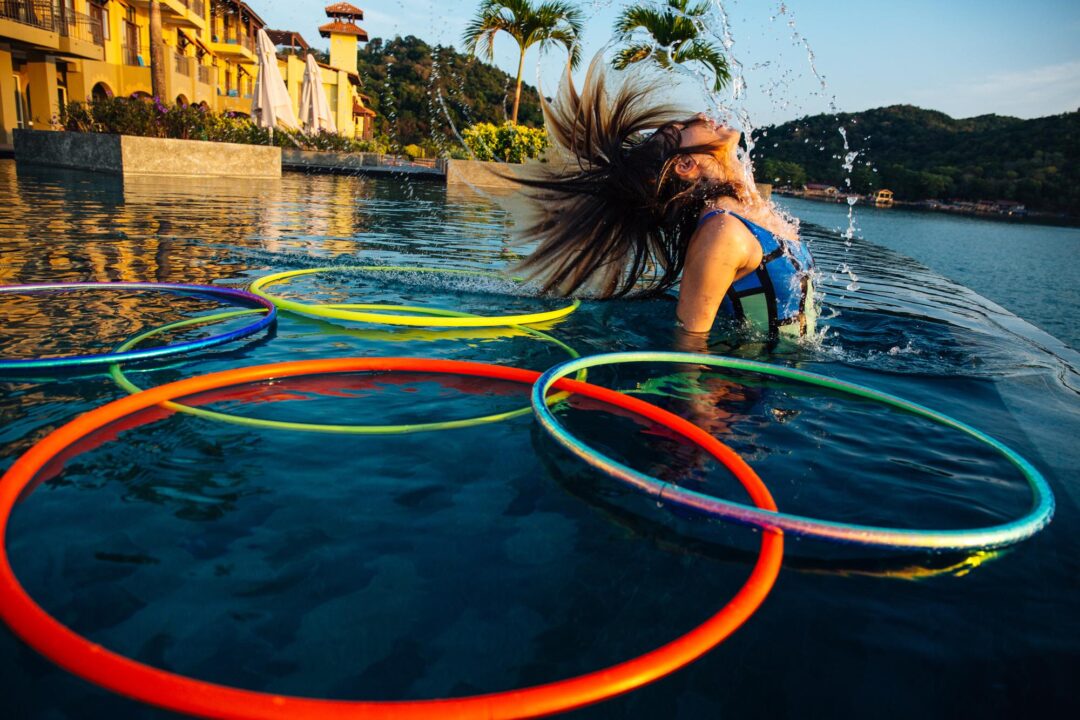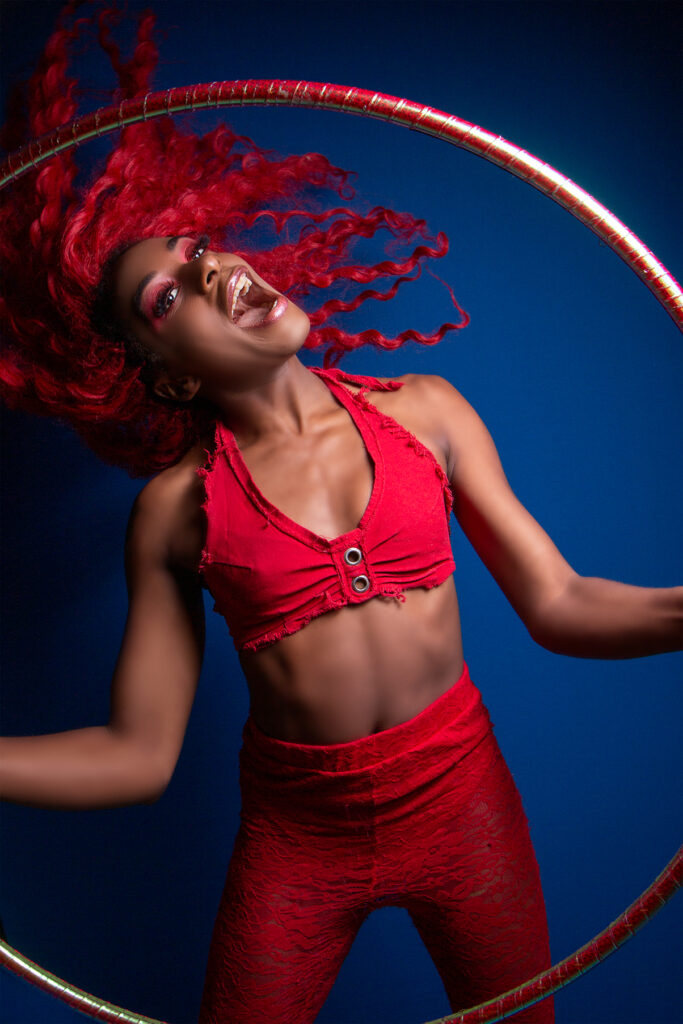a Guide by Hoopologie Ambassador, multidisciplinary movement artist, theatre maker, and live art Performer Symoné (@symoneforever)
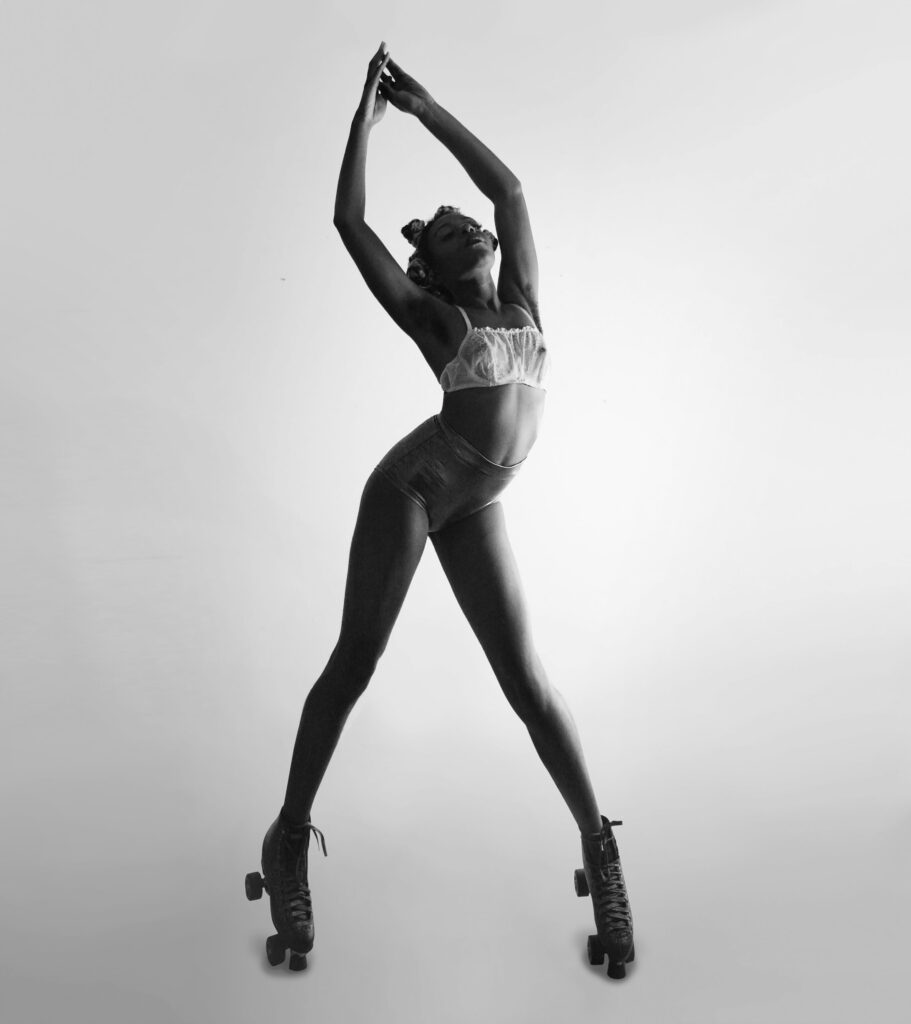
Symoné is a queer multidisciplinary movement artist, theatre maker, and live art performer from Washington DC based in the U.K. Her movement practice is an integration of various skills; roller skates (both high heel and artistic skates) fused with my multiple hula hooping, pole dancing, and voguing. She has worked internationally in 10 different countries, toured with pop-star OMI in his hit song, ‘Hula Hoop’ (precision remix), performed in London’s West End with award-winning cabaret company La Soirée at Aldwych Theatre and at The Palace Theatre with celebrity magician Chris Cox.
Symoné is an ambassador with Hoopologie, holds a Guinness World Record and always has something new up her sleeve to create sensation.
Self-Training Ain’t Easy
I have found that teaching myself to advance my skills is a very specific way of thinking that only solidifies itself with practice. Self-training is a skill I’ve learned takes a lot of trial and error, discipline, and self-awareness. I have a huge interest in learning on my own, it’s like an exciting puzzle to me, while I occasionally attend workshops, classes, and Google ‘how tos’, the majority of the time I have a passion to figure it out solo. If you find your training and upskilling is stagnant or you’re interested in getting inspired by some new methods of training, I have written this for you!

Plan Your Session
This is where you ask yourself, what do I want to achieve? Is there anything in your current regime holding you back from your goals? Consider both the short term (i.e. one specific session) and long term goals. Consistency in our goals is important to get ourselves closer to them. This is obvious, but it’s important to be self-aware when we’re getting distracted away from goals or when we give up halfway. How can you keep yourself on track?
Our minds work better towards deadlines, so give yourself a couple of goals you can achieve by a specific time. In addition, I would suggest giving a reason for this goal, a certain type of deadline pressure can help you. Consider how you can set goals and how you can achieve them, knowing that hard work and patience is essential.
Set & Setting
Make wherever you’re training a place you know you will feel motivated and focused. Consider music, public vs private spaces, lighting, temperature, etc. Consider the impact of a public park on sunny Summer’s day that is very vibrantly popular vs. a solo studio with mirrors, speakers and temperature control. Wherever you decide to train, consider a place that excites you, you have the space and tools to support you, and a place you can get the work done.
Be Your Own Coach
Being your own coach takes practice, it requires a certain amount of self-assurance, honesty and self-discipline. You have to learn the balance between two voices, one that is loving and mindful of your well-being and a strict voice. Here’s what might help: Imagine someone in your life or a fictional character that motivated others or themselves to be the best that they can be. What traits does that person have that can inspire you? Imagine those moments of wanting to give up and giving it 3 extra pushes. You will have to find the best techniques to coach yourself in these hard moments, whether it be mantras or affirmations or motivational music that keeps you going.
Overall, what makes your discipline special is that it’s probably self-empowering, so to have the ability to teach yourself is a real skill. It can take years to find out how to do this (it definitely did for me). I think priority in my opinion is to be safe when learning high skilled goals, just like any training session safety for a student is really important in the eyes of a coach, so research and be mindful of your body when you push yourself. You will find your own unique balance for being a coach based on your personality, for me I am 40% self-care and 60% strict, but that’s purely because of my personality, and that alters based on the discipline. So, depending on your goals, your familiarity and knowledge of a skill or prop, ask yourself how you need to coach yourself, what do you need to grow?
Training
When I say training, I don’t mean aimlessly moving to music until you run out of time or steam (unless the aim is to move aimlessly!), in my definition here training has an intention. When you know what you want to achieve, you can determine effective training methods to help you get closer. How do you like to learn?
First, break down what your goal requires, throughout the training this may alter. You will find that you might need to learn more or less than you expected, regardless it’s important you create a training regime that is effective. Consider your favourite classes and workshops in the past and how that specific teacher laid out the lesson, what worked for you and what did not? Consider what your goals are and what you need to reach this, again this requires you to be very honest with yourself.
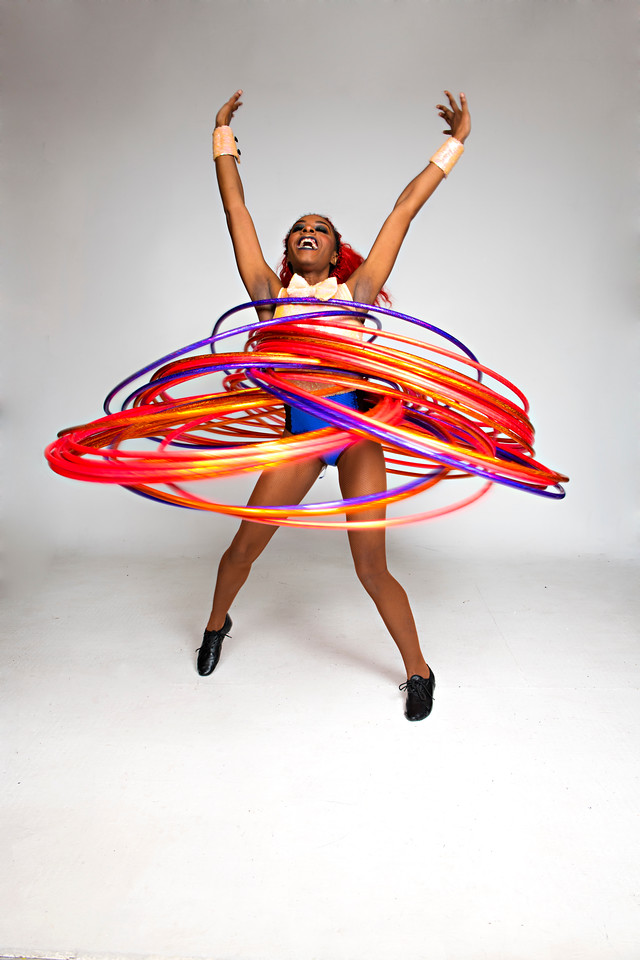
Keeping Focused
Remember it’s always about staying motivated and excited about your goals, so it’s important to take away what will be distracting to you. Being both physically and mentally in the room (or location) you are training in is important, if your head is elsewhere or you’re emotionally not feeling balanced this can make it difficult to focus. That’s okay, because progress is not a straight line.
Remember it’s always about staying motivated and excited about your goals, so it’s important to take away what will be distracting to you. Being both physically and mentally in the room (or location) you are training in is important, if your head is elsewhere or you’re emotionally not feeling balanced this can make it difficult to focus. That’s okay, because progress is not a straight line.
Consider not going online/social media during your sessions. Use timers and use music that will keep yourself pumped! Being present and focusing your mind and body into the session will help you get the most out of it.
Goal Setting & Keeping on Track in Sessions
You want to look back and know how far you’ve come! Top tip for this, take photos and videos, or keep a journal and write after each session, talk about what drills you did, what went well, what didn’t, and what you could do to progress. Personally, I love writing about how I feel in a training journal, “I’ve been working on x for months and I finally got it today!”. It reminds me what I was actually thinking and feeling that day, sometimes footage can’t capture these important milestones. Keeping some documentation of when you did something awesome will remind you of that time you went through hard times, you might need that reminder!
Goal Setting & Progressing
Just remember; progression is not a straight line, okay? Your own self awareness will help you to understand your own balance of being patient and pushing your boundaries. Overall, I always suggest that resting/time off away from training is equally as important as the training itself. By that I mean that over training does exist and affects you both emotionally and physically.
End on a Good Note
If your prop drops or you fall, get up and do something silly. You want to feel good after a session so you’re excited to keep progressing, so be sure to do something that makes you feel successful at the end.
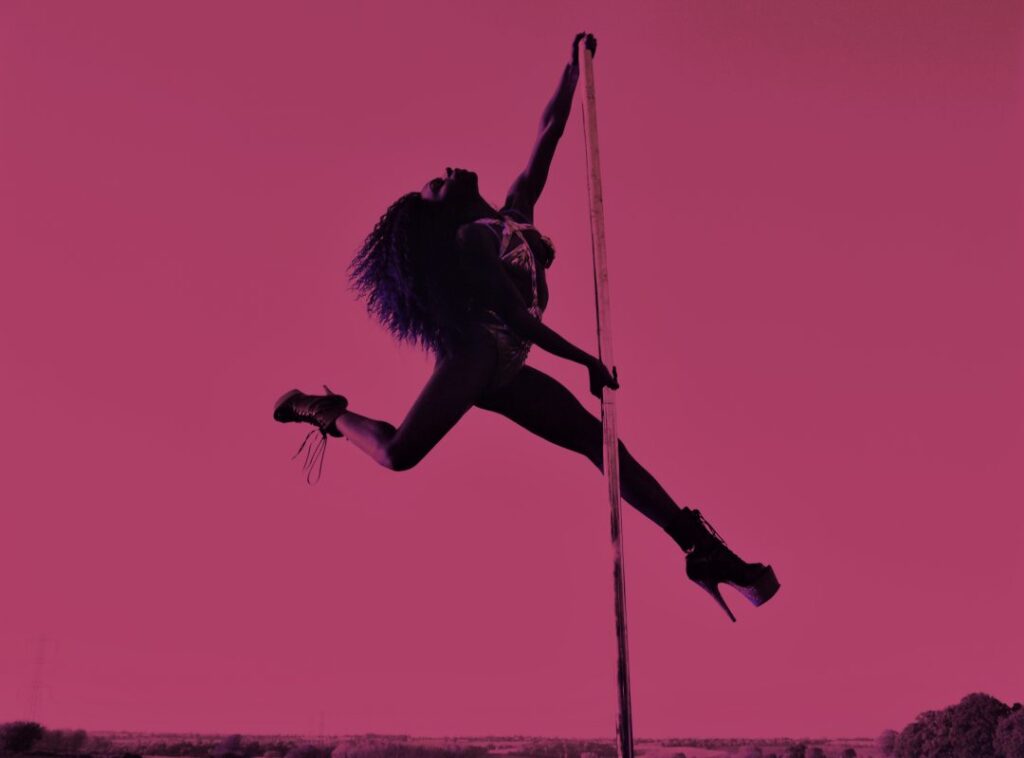
Extra Thoughts
Trickery: I like to play with trickery when I set goals. Sometimes this means doing something I’ve convinced myself isn’t achievable and sometimes this means starting on the lesser trained side and doing it twice. Implementing playfulness is something that I find supports me into tricking myself that I’m just having fun and it’s not hard work. Set & setting can influence trickery as well, for example jamming with friends or setting a nice playful or relaxing environment can feel like your session will be relaxing and playful rather than an intense workout, but yet it is progressive.
Use your breath: Relaxation during those complex tricks or skills (i.e. advance flexibility) will help you really ease into it and push into your end range. Breath is also really great to play with when freestyling or in choreography as well.
Follow the rules: Technique isn’t easy but it’s worth getting things right so you can be lazy. By that, I mean some advanced tricks require a lot from your body, say strength or flexibility, it’s important you train safely and don’t rush learning. Once you feel comfortable you can really play around with it!
Break the rules: Following the rules is important for strength training and conditioning, but I think in terms of tricks, flow and styles, breaking the rules can make your movements more personal. Feel free to challenge anything I’ve written, it might work better for you.
Bonus: 3 Exercises to help with flow and choreography
Take ten minutes maximum to choreograph and memorize a sequence (5 minutes to create 5 minute to repeat and memorize). Put on different songs and repeat the same choreography and counts created, practice changing style, groove, additional physical flairs, and character.
Put on a playlist and freestyle with and without your prop. The goal is to dance with your eyes. By this I mean, don’t let the prop do all of the work, use your face and your gaze in your performance.
Pick a trick or a pose. Find 5 new ways to enter and 5 new ways to exit out of this move. This will help vary your transitions and help you stop repeating sequences too much.
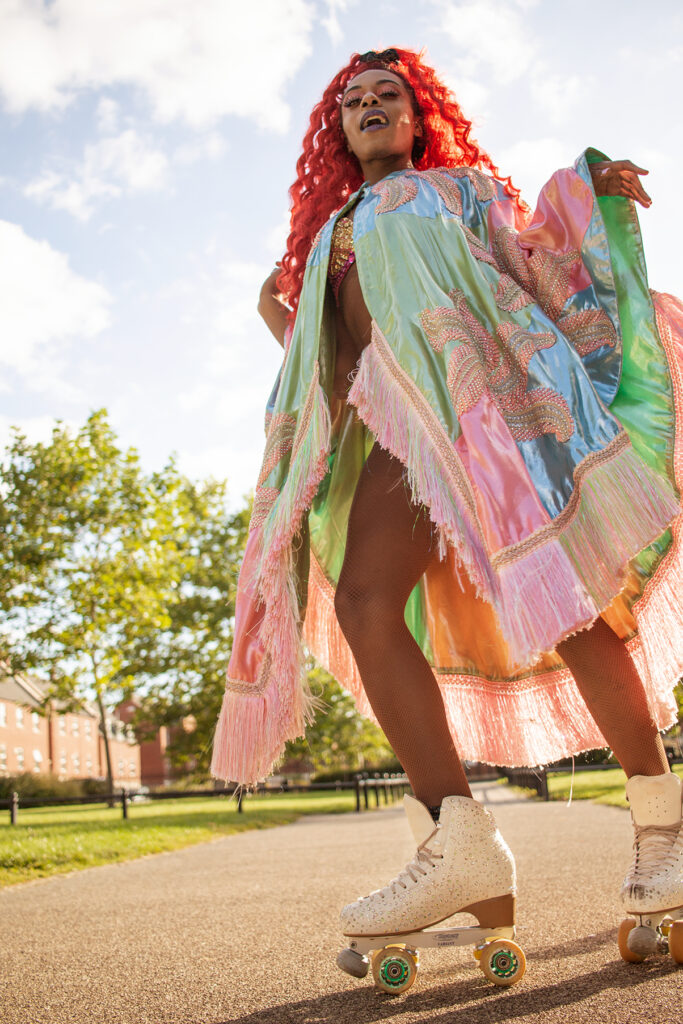
Stay In Touch!
I’m really interested to hear how people upskill and create. Self-training is a very important part of my practice and I’m always excited to get inspired by others. I would love to hear from you! Please feel free to connect or drop me a line.
Instagram | Facebook | Website | Newsletter | Check out The Black Excellence Hoop

